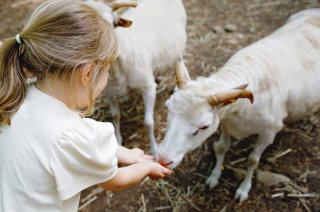
Dossier
One Health approach to combat zoonoses
Animals can transfer pathogens such as the corona virus, avian influenza or Q-fever onto humans. These infectious diseases are known as zoonoses. Wageningen University & Research focuses on a One Health approach to combat zoonoses. To this end, scientists from various domains, such as human and animal health, ecology and behavioural sciences, collaborate.
What is zoonosis?
Zoonosis is an infectious disease capable of jumping from animals to humans. Ebola, for example, originates in monkeys, and humans may also contract Tularaemia (rabbit fever) from an infected hare. The pathogen may be a bacteria, virus, parasite or fungus. Or, as is the case in mad cow disease, it may be a folded protein (prion) in the body. Some 150 zoonoses have been identified globally. Examples include tuberculosis, hepatitis E and rabies. Animals may show no symptoms while infected with a zoonosis that causes illness in humans, such as is the case in pigs infected with hepatitis E.
How can humans become infected by zoonoses?
Zoonoses have various paths to infection. Pathogens may be airborne or may be transferred through direct or indirect contact, swimming in infected waters, or biting or infected faeces. Food poisoning through animal products is also common—Salmonella, for example. An intermediary host may also transfer a zoonosis, as is the case in Lyme disease. This disease occurs in wild animals and is transmitted to humans by ticks. This is called vector-borne zoonosis. Such infections may also occur the other way around: human diseases that can be transferred to animals are known as anthropozoonoses.
Must we prepare for a new epidemic or pandemic of animal origin?
The honest answer is “yes”. The majority of new diseases identified in humans originate from animals. Population growth, globalisation and climate change create a world in which diseases can spread rapidly. Tropical infectious diseases are on the rise and imperil humans and animals. Consider, for example, the Zika virus, Rift Valley Fever and West Nile Fever. However, that does not mean that we must sit idly by. We must prepare, and we must actively ensure that we minimise the chance of transferring pathogens between animal species or from animals onto humans, for example, by preventing the disruption of ecosystems, keeping our domesticated animals healthy and monitoring where needed.
What does WUR do to combat zoonoses?
Our scientists aim to prevent animal diseases that could potentially also infect humans, and they focus on mitigating the impact thereof. In terms of prevention, we can ensure that our animals do not get sick, and if they do get sick, they are less likely to infect humans. We map risks and focus on the early detection of animal diseases. Moreover, we work on rapid detection through effective and socially accepted measures. Should an animal disease infect humans, our research contributes to mitigating the impact, for example, by inoculation of animals and humans.
What is a One Health approach?
There are no singular solutions to issues related to zoonoses. Knowledge of human or animal health alone is insufficient. One Health is a joint effort by different domains with a focus on national and international policy, research and applications. Wageningen experts of varying disciplines collaborate with other scientists within the Netherlands and abroad. We strive for international collaboration through which research and surveillance are linked on a global scale, infections are monitored, and knowledge is shared. Global One Health because infectious diseases disregard borders.










